ECONOMICS OF THE WELFARE STATE
ECONOMICS OF THE WELFARE STATE
ECONOMICS OF THE WELFARE STATE
Create successful ePaper yourself
Turn your PDF publications into a flip-book with our unique Google optimized e-Paper software.
<strong>ECONOMICS</strong> <strong>OF</strong> <strong>THE</strong> <strong>WELFARE</strong><br />
<strong>STATE</strong><br />
Sponsored by a Grant TÁMOP-4.1.2-08/2/A/KMR-2009-0041<br />
Course Material Developed by Department of Economics,<br />
Faculty of Social Sciences, Eötvös Loránd University Budapest (ELTE)<br />
Department of Economics, Eötvös Loránd University Budapest<br />
Institute of Economics, Hungarian Academy of Sciences<br />
Balassi Kiadó, Budapest
Authors: Róbert Gál, Márton Medgyesi<br />
Supervised by Róbert Gál<br />
June 2011<br />
Week 4<br />
Redistributive effects of taxes and transfers<br />
Introduction<br />
Aim: to measure the redistributive effect of cash transfers and taxes.<br />
Analysing the distribution of transfers and taxes:<br />
• Graphic representation of the distribution of transfers and taxes: concentration curve.<br />
The curve represents the % share of transfers/taxes obtained by groups (e.g.<br />
deciles), defined on the basis of total income. Typical curves: see next slide.<br />
• For an index describing inequality of the distribution of transfers/taxes: concentration<br />
index (C). C measures the area between the concentration curve and the line<br />
(diagonal) of the equal distribution of transfers (similarly to the relation between the<br />
Gini index and the Lorenz curve).<br />
C<br />
Y k<br />
⎛<br />
⎜ 2<br />
=<br />
_<br />
⎜<br />
⎝ Yk<br />
⎞<br />
Cov(<br />
Y<br />
⎟ ⎟⎟ ⎠<br />
k<br />
, F(<br />
Y ))<br />
2
Concentration index ranges from –1 to 1<br />
Negative in the case of progressive transfers (–1 if the poorest individual gets all the<br />
transfer). The distribution of transfers targeted at the poor belongs to this category.<br />
0, if the distribution of the transfer is equal. The distribution of universal transfers<br />
belongs to this category.<br />
Positive, in case of regressive transfers (1 if the richest gets all). The distribution of<br />
income-dependent transfers belongs to this category. E.g. social insurance programs<br />
(pension, unemployment benefit), where transfer depends on the amount of contribution<br />
paid.<br />
Typical concentration curves of<br />
transfers/taxes<br />
Source: Förster, 2000<br />
3
Redistributive effect 1: Comparison of<br />
distributions before and after transfer<br />
• Comparison of the inequality index of the distribution before and after transfers.<br />
• The larger the change of the inequality index, the stronger is the redistributive<br />
effect.<br />
• Example: see next slide<br />
• Lesson:<br />
The inequality-reducing effect is stronger:<br />
– The lower the concentration index of a given kind of income, the more<br />
progressive the transfer<br />
– The higher the share of the transfer in total income<br />
• Disadvantage: in case of comparing the effects of more than one transfers the<br />
magnitude of the effects depends on the order the transfers are applied.<br />
Comparison of inequality before and after<br />
transfer (example)<br />
Post-transfer distribution<br />
Pre-transfer universal transfer income-contingent targeted transfer<br />
Income group distribution total=30 total=60 total=30 total=60 total=30 total=60<br />
1 50 55 60 52 54 58 66<br />
2 50 55 60 52 54 58 66<br />
3 50 55 60 52 54 58 66<br />
4 100 105 110 108 116 102 104<br />
5 100 105 110 108 116 102 104<br />
6 100 105 110 108 116 102 104<br />
Mean 75 80 85 80 85 80 85<br />
Gini 0,1667 0,1563 0,1471 0,1750 0,1824 0,1375 0,1118<br />
dGini -0,0104 -0,0196 0,0083 0,0157 -0,0292 -0,0549<br />
variance 625 625 625 784 961 484 361<br />
relative variance 0,1111 0,0977 0,0865 0,1225 0,1330 0,0756 0,0500<br />
drelvar -0,0690 -0,0802 -0,0442 -0,0337 -0,0910 -0,1167<br />
4
Redistributive effect 2: decomposition of<br />
inequality by source of income<br />
• Question: to what extent is a given type of income responsible for the total<br />
inequality (in absolute and % terms). Let us express total inequality as the sum of<br />
the inequalities of income sources!<br />
i<br />
• Y k is the income of the i th person from source k. The distribution of type k incomes<br />
is Y k =(Y 1 k , Y 2 k ,..,Y n k ) and the distribution of total income Y=(Y 1 , ….,Y n ), where the<br />
total income of the i th person is Y i i<br />
=Σ k Y k<br />
• First we take variance as the index of inequality. Decomposition of the variance of<br />
Y:<br />
∑<br />
∑∑<br />
var( Y ) = var( Y ) + cov( Y , Y )<br />
k<br />
k<br />
• We need one term by type of income. How to allocate covariances among the<br />
different income sources?<br />
• The “natural” solution (“natural decomposition” Schorrocks 1982) gives half of the<br />
covariance terms which include income source k to the given income type.<br />
j≠k<br />
k<br />
k<br />
j<br />
• Then the absolute contribution of type k to the total variance is (S k )<br />
S = k<br />
var( Yk<br />
) + 0.5∑∑<br />
cov( Yk<br />
, Yj<br />
) = var( Yk<br />
) + ∑cov(<br />
Yk<br />
, Yj<br />
) = ∑ cov( Yk<br />
, Yj<br />
) =<br />
j≠k<br />
• The percentage contribution of the income type k to the total inequality (s k )<br />
measured by variance is:<br />
k<br />
• If inequality is measured by the relative variance of the distribution (var(Y)/µ 2 ), then<br />
the contribution of the given k income-type to the total inequality:<br />
j≠k<br />
cov( Yk<br />
, Y )<br />
sk=<br />
var( Y )<br />
Sk=<br />
cov(<br />
Y<br />
Y , Y )<br />
k<br />
2<br />
j<br />
cov( Y , Y )<br />
k<br />
5
s k is the same no matter if inequality is measured by absolute or relative variance.<br />
• The “natural decomposition” of the Gini coefficient (Rao, 1967), where, C Yk is the<br />
concentration index of the k th type of income:<br />
G<br />
Y<br />
=<br />
The attributes of decomposition<br />
K<br />
∑<br />
k=<br />
1<br />
_<br />
Yk<br />
C<br />
_<br />
Y<br />
Y k<br />
Shorrocks (1982):<br />
• The inequality index (I(Y)) is continuous, symmetric, and its value is I(Y)=0 if and<br />
only if distribution is equal.<br />
• Uniform treatment of income-types: the contribution of income-types should be<br />
independent of the order of taking them into consideration.<br />
• Independence of the level of aggregation: the contribution of income type k should<br />
be the same irrespective of the other types are taken separately or as aggregate.<br />
• Consistency: the sum of contributions of income types equals to total inequality.<br />
“Natural” decompositions satisfy axioms 2., 3., 4. but there are other decompositions<br />
that satisfy them, too. Therefore, decomposition is not unambiguous. Further axioms<br />
have to be adopted to narrow down the set of decompositions:<br />
• 2-factor symmetry: if there are two income types and the distribution of the first is<br />
the permutation of the second their contributions should be equal.<br />
• Normalization: contribution of income types of equal distribution should be 0.<br />
Theorem: axioms 1.–6. imply that the percentage contribution to total inequality is<br />
s k =cov(Y k ,Y)/var(Y)<br />
This formula applies to all inequality indices!<br />
6
Interpretation of decomposition of inequality<br />
What does the contribution of an income-type to total inequality mean?<br />
• Inequality that would be observed if k was the only source of inequality (the<br />
distribution of all other income types was equal)<br />
C A k =I(Y k +(µ−µ k )e),<br />
where I is the inequality index, µ is the average income, and e is the unit vector.<br />
• Decrease in total inequality when distribution of k is equalized<br />
C B k =I(Y) − I(Y−Y k +µ k e)<br />
Interpretation A ignores interdependence (covariance) between income-types.<br />
Interpretation B allocates income-type k’s covariance of all other types to k.<br />
If variance is the inequality index, then S k =0.5(C A k +C B k ).<br />
A<br />
In the case of other inequality indices there is no obvious connection between S, C k<br />
and C B k .<br />
In these cases the interpretation of decomposition is not unambiguous.<br />
7
Comparison of two methods<br />
What kind of transfers have inequality increasing (+) or decreasing (–) effects?<br />
C T : concentration index of transfer<br />
C M : concentration index of income (before transfer)<br />
Before-after comparison<br />
Decomposition<br />
C T >0<br />
(Income contingent<br />
transfer)<br />
C T >C M + +<br />
C T =C M 0 +<br />
C T


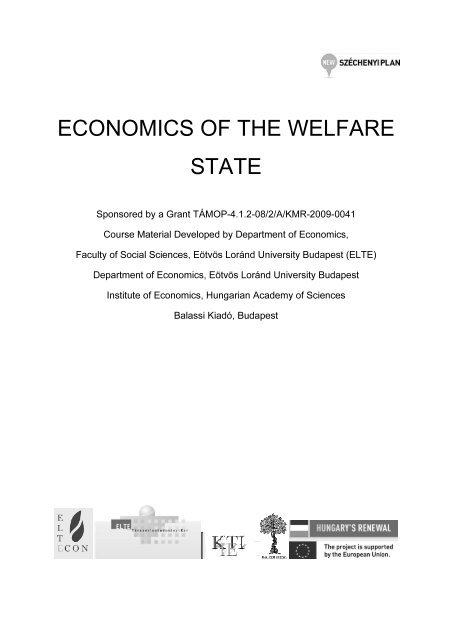
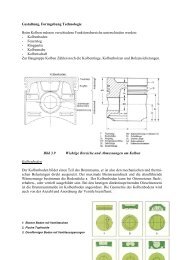
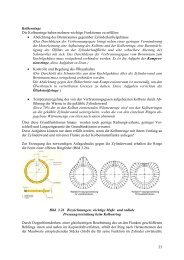





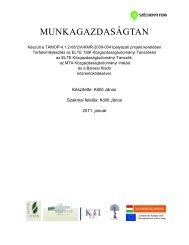


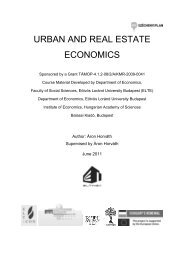



![epidemiológiai módszerek [Kompatibilitási mód]](https://img.yumpu.com/40130327/1/190x134/epidemiolagiai-madszerek-kompatibilitasi-mad.jpg?quality=85)